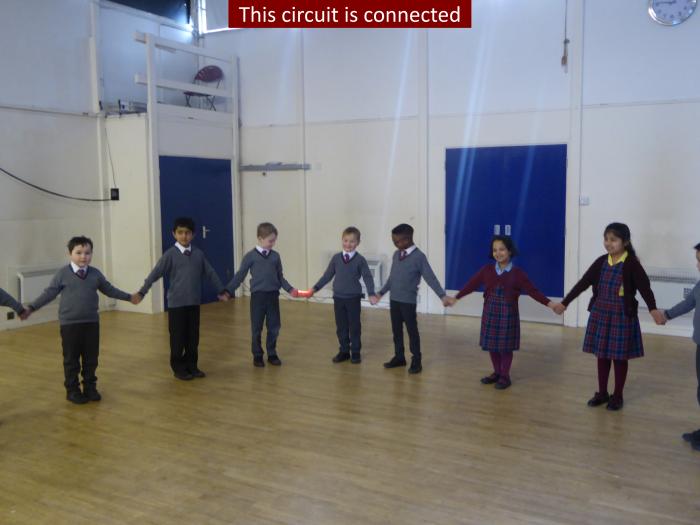
Going Round In Circuits
In their Science lesson this week, the children in 2HM learnt a lot about electricity and electrical circuits. They also learnt a great deal about team work.
These days we often take electricity for granted. With the push of a button or the flick of a switch, our computer powers on and light fills a room. Yet, out of sight, under the floors and within the walls of all our homes, there are wires and cables connecting our lights and appliances in electrical circuits. For children, this is extremely difficult to understand.
Miss Murphy has already explored with her class the basics of what electricity is and where it comes from. Now, she wanted the children to understand what exactly we mean when we talk about a circuit. To do that, they had to think about the word ‘circuit’ very carefully and to consider whether it reminded them of a particular 2D shape they already know very well. In the gym, the children were asked to stand in a ring. They were not, Miss Murphy told them, to hold hands. In so doing they found that they had made a circle but not a circuit. The missing ingredient in the circle was team work. As soon as everybody in the class was holding hands, the bulb between Sam and Oliver flashed orange and made a buzzing noise. Wow!
Taking this a step further, Robyn and Ela let go of each other’s hands. The circuit was broken and the current couldn’t flow. Out went the light. With power restored, Jack and Anya discovered that even a very small circuit can work perfectly well if it is correctly connected.
Back in the classroom, the children were encouraged to build on what they had learnt from the human circuit in the gym. Working with a partner, and equipped with a battery pack, some wires and a bulb or buzzer, Miss Murphy asked her class to connect a circuit. For some this was puzzling at first but having a supportive friend with whom to share ideas was an enormous help. Once the light was lit up and the buzzer was beeping, everyone felt a great sense of satisfaction. Next, there was the chance to include other elements in the circuit, including using switches to break the circuit. As Vivienne realised, this is exactly what happens when we turn the light on and off in the classroom.
The children were keen to make bigger circuits and to explain to the rest of the class how they made them work. Erin found out that, when two batteries are powering the circuit, the bulb glows more brightly. In turn, this helped Oliver to understand that the amount of electricity running through a circuit determines whether or not it will work properly. Would, for instance, a circuit with two bulbs and only one battery produce a very bright light?
By the end of the lesson, the children understood that electricity is not only tremendously exciting, it also works by a process that they can explain, rather than just by magic. Now they feel confident with the basic components of a circuit, they are desperate to investigate further and have plenty of ideas for investigations. They will also learn about the potential dangers posed by electricity in the home, as well as about various sources of electrical power. In fact, Miss Murphy has heard that it is possible to generate electricity from a potato. However, I can reassure parents that it is unlikely that Eversfield will be converting to potato power any time soon.